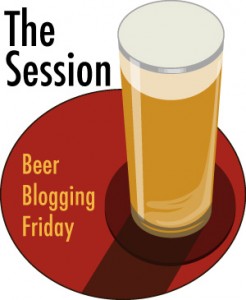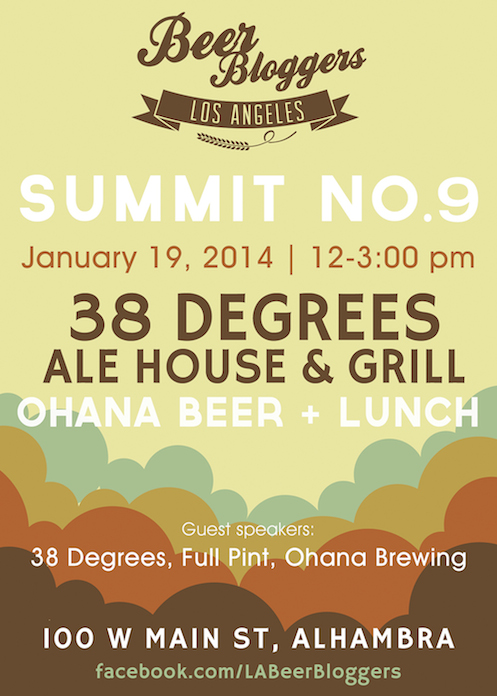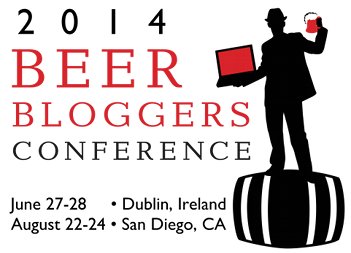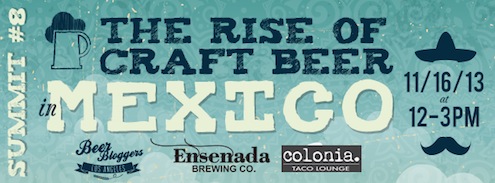
The topic for March comes to us from Baltimore Bistros and Beer. And here is the topic…..
“There are plenty of people out there who wish that alcohol consumption ceased to take place and would be happy for prohibition to rear it’s ugly head once again. Others, while not looking to ban alcohol altogether, are quick to judge those of us who drink more than what they would consider a proper amount. As I get older, I’ve lost the urge to defend my life decisions, but there was a time when judgment about the liquids I chose to put in my mouth made me feel self-conscious.
And that’s where my idea for this month’s Session topic came from. It’s easy to find article after article on the internet telling us that alcohol is bad. As beer bloggers it’s safe to say we all disagree. Let’s take the opportunity as a group to tell people why we do drink and how it improves our life for the better. I know the default answer a lot of us fall back on is “it’s nice to sit back with a good beer after a stressful day of work”, and while that’s true, I’m looking for answers that aren’t so obvious to people who aren’t fans of our hobby. Beer is bigger than a liquid “chill pill” or we wouldn’t have gone about setting up a blog and dedicating so much of our time discussing it. So, what is it that compels you to drink and what would your life be missing if beer was no longer an option for you?”
Why does anyone choose a <blank> and then pushes ever deeper while others simply enjoy the <blank>.
You could fill in the Mad Lib with anything from needlepoint to collecting Hummel figurines. But I believe that there is a primal urge in all of us to investigate, to learn all we want to about a subject. It’s just that it is devilishly hard to pinpoint just one reason why one thing grabs us by the lapels while another leaves us cold. Though I can say with near 100% certainty the two things that put me into position to later become a beer blogger.
If I was to analyze myself, living near Portland, Oregon with parents who visited wineries frequently and restaurants even more was certainly a behavior that I was modeling even though I substituted beer for wine in a minor act of rebellion. So by sheer fact of DNA and GPS, I was going to have a proclivity for at least knowing more about craft beer than the average.
Secondly, I was laid off in 2009 just as blogging was becoming available to the masses and not just to niche early adopters. So, I had not only time to drink and to write but a place to put that writing other than a dream journal and as the peanut butter said to the chocolate, the rest is history.
But the more interesting why is, why have I stuck with it for 5 years? There are plenty of reasons to have stopped. I cannot drink to excess without being awakened with a throbbing temple that will not fade and there is a wee bit of family history in the over indulging category, to put it mildly. It sure doesn’t pay anything so that motivation is gone. The novelty has worn off, I am now not a weirdo with a beer blog in Los Angeles. I am one of many, as other weirdos have joined in and are doing great and we have even formed a group with “Summit” meetings and hashtags.
And if forced to go into the Witness Protection Program, I could probably give up writing a beer blog (though I would still want to read them). But I can’t even picture a time when my ‘fridge doesn’t have craft beer inside. What else would fill the gap? Herbal tea? I am of course assuming that is was not imbibing beer that I would also be restricted from having cocktails or wine. I simply can’t drink that much coffee which is the other hand crafted type of drink out there. I would have to replace craft beer with some food like artisan jerky. But none would hold the allure of a 4pack of the latest SoCal IPA.
So you could make a case that I like the thrill of the new, that I am a contrarian who cuts against the grain (pun intended) or that I need to express myself in introverted ways. But again those are not craft beer centric. That could be me buying actual physical books in a time of e-readers. And those reasons are more negative than positive.
What positive jolt do I get from having a bottle opener in one hand and a full bottle in the other? (And yes, I know that was the initial question. I am working my way slowly to the answer.) I like the tangential things like gathering at a bar or brewery, I like talking about beer issues or discussing the merits or demerits of a particular beer but mostly, I enjoy the taste. Much like having a good cup of coffee after a week of office cold swill or having an In ‘n’ Out burger instead of a flattened McDonald’s “thing”.
A note of Nelson Sauvin brings my palate alive. I love the taste of a funky saison. A crisp pilsner on a warm day is refreshing. It just tastes good. And that’s why I buy and buy more and more craft beer. To get that burst of neurons firing in my brain. And as long as brewers keep firing up their brew kettles then I will be there waiting.







